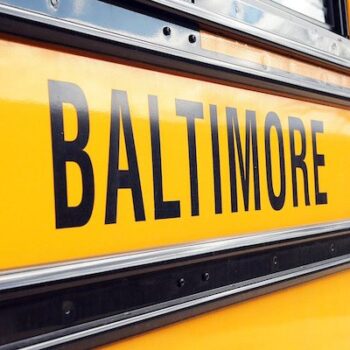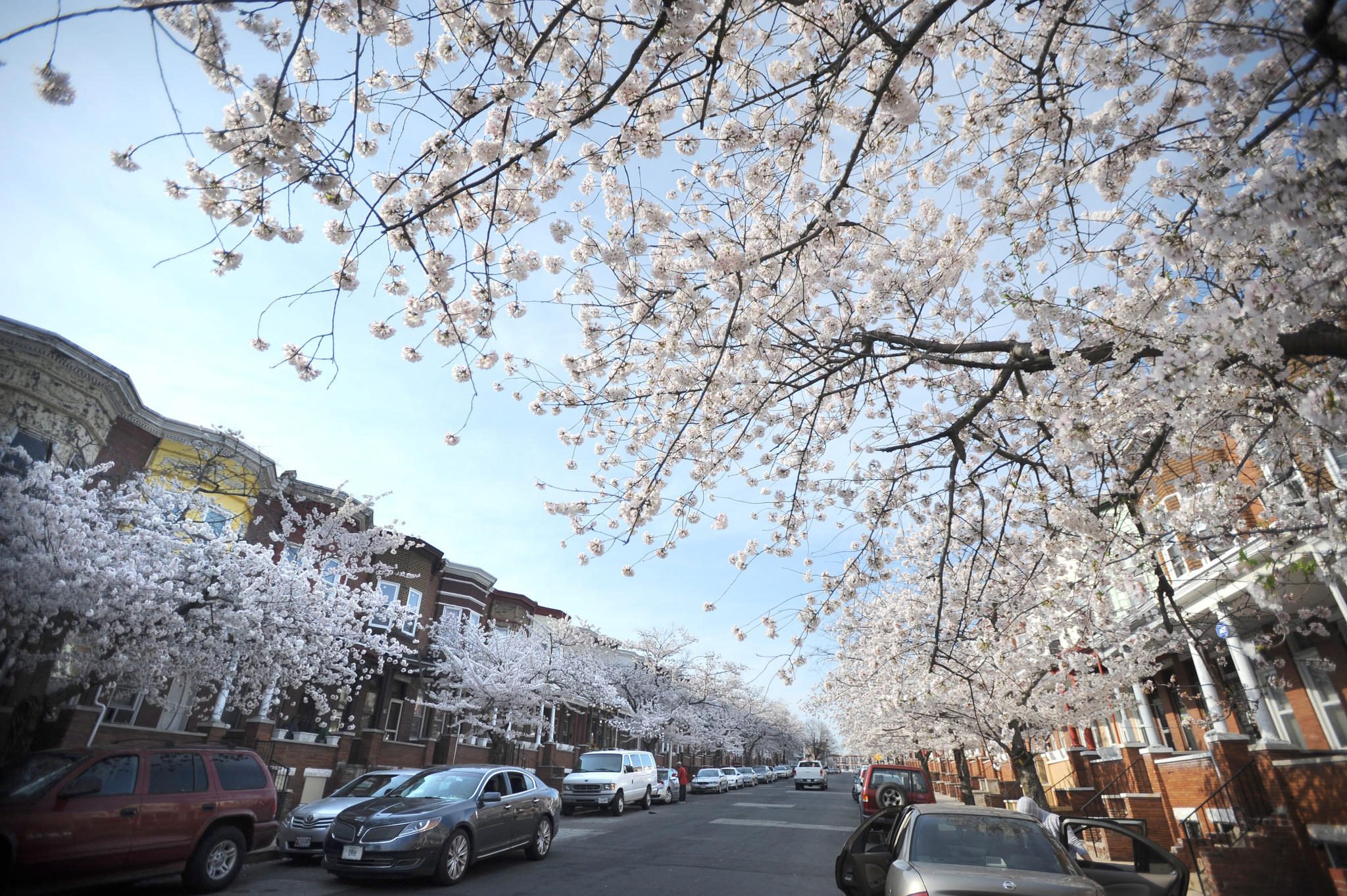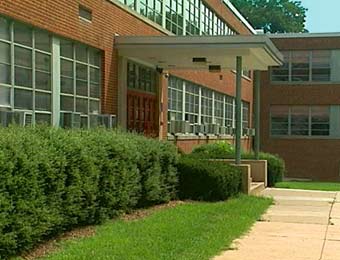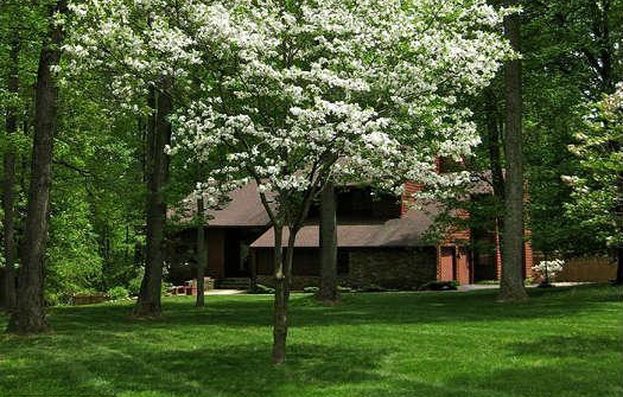
When I tell people I’m from Baltimore, they always have two questions for me. “Have you seen The Wire?” and “How do you feel about the Freddie Gray thing?” People are still posting about it online, they tell me, an invitation to comment.
One doesn’t meet a lot of Baltimoreans in Los Angeles, and these are the only two pieces of culture they have to offer. Of course, I didn’t ask them to ask me where I grew up, and I don’t need them to try to relate. But I understand why they do. It’s human nature to reach for connections, no matter how faint.
I always have two responses for them: “Yes, great show,” and, “Oh man, it’s terrible.” The truth is I’ve only seen the pilot, and my experience with racism in Baltimore is thornier than that. But it’s not what the Lyft drivers and account managers by the snack table want to hear.
If truth were the goal, I could tell them I haven’t been to my hometown in three years—that I found out about Freddie Gray and the protests just like they did: on Facebook. I could tell them that even if I lived in the house where I grew up, I’d probably still have found out about it online. I wouldn’t hear the cries; I wouldn’t see the fires. I’d feel just as flustered and unhelpful as I do right now in California, silently flicking through a feed of fury, fingers typing, then deleting. Typing, then deleting. I could tell them that Baltimore is designed that way. I could tell them about a version of Baltimore they can’t see from their screen. I could tell them about Damon.
But I don’t.
“Where are you from?” I say.
*
Baltimore is a famously segregated place. I know all big cities have racial divides, but what’s weird about my hometown is just how closely they coexist, yet never meet. Compton is twenty-one miles from my new apartment in Culver City. In Baltimore, the equivalent is right across the street. The projects stand fifty feet from the front entrance of Johns Hopkins Medical School. Demographics switch harshly every block, like a human checkerboard. Black, white, black, white. Though if you stick to your own sidewalk, you’d never know it. In Baltimore, you could live your whole life that way.
Growing up, I never thought about it. After I got my driver’s license, I’d ride into the city a couple weekends a month to shop for vintage clothes or see a movie at the independent theater. I was warned not to stray from Charles Street—and though they never told me why, I was a kid, and since there was nothing to do past Charles Street anyway, I didn’t think to ask.
The segregation blurs when you reach Baltimore County, where I spent most of my childhood. But it still exists. A physical line there separates us in the form of Falls Road, a major throughway that runs almost all the way up to Pennsylvania. The county’s gentile whites live to the east of it, the blacks and Jews to the west. I never thought about this either.
My dad is Jewish, and that’s how I was raised—though my mother is from a Catholic family, and we are all unflinching atheists—so having lived exactly one mile west of the line now seems, coincidentally, a fit.
My elementary school was ninety percent Jewish, and with my long espresso hair and diminutive stature, I blended right in. The school was in a safe, well-manicured neighborhood two miles west of the line, where cedar and stone houses surrounded by cherry blossoms lit up blue and white in winter. Until I was twelve, every friend I’d ever had wore a Star of David around her neck.
In sixth grade, I switched to a magnet school, which sourced kids from all over Baltimore County. Sunbrook Magnet Middle was in a primarily black neighborhood almost six miles west of the line. The school had a performing arts program well known throughout the county, and having developed an early taste for the stage, I couldn’t wait to start.
I remember the morning of my first day. I wore a baggy Sunbrook sweatshirt and a wide-eyed expression, soon to be replaced with dress-code-breaking tube tops and apathy. My stomach in knots, I entered the lobby to find a swarm of tall, roaring people who smelled like adults and seemed to speak a whole different language from me.
I am so grown up now, I thought, peeling the sweatshirt from my tiny frame.
*
Students had to apply and get accepted to Sunbrook, so it was prestigious for a public school. A lot of parents wanted their kids to go there, especially people whose slated schools were in neighborhoods that weren’t surrounded by cherry blossoms.
Once accepted to Sunbrook, we were each placed in a special program. All my friends were in performing arts, like me, but there were other ones too, like visual arts and foreign language. You were also put in one of two academic divisions: “Gifted & Talented” or “Standard.” You rarely interacted with students outside your program or academic track. A “Spanish, Standard” and a “Music, Gifted & Talented” would probably never even meet.
I met my best friend at Sunbrook on the second day: a big, rosy-cheeked boy named Billy. We were in the same drama class and would go on to act in all the school plays together. Billy had a booming laugh and wore pink polo shirts, and his favorite musical was Wicked.
“It’s the best Broadway show of the new millennium,” he’d say. “Better than Hairspray and Avenue Q, combined.”
“Now that’s a musical I’d like to see,” I’d retort, elbowing him with a campy grin.
Together, Billy and I would belt show tunes down the hallways and gossip about who we thought would get the lead in the spring play. All the girls in our drama class loved Billy, even the ones from Standard. They thought he was funny, like a cartoon character.
“He is such a clown,” they’d say.
*
When I entered Sunbrook, I was blind to color in the way that only children can be. All I knew was that different people had different color skin, and that was that. Like different cars. Or M&Ms. It didn’t mean anything. Everyone experienced the world in the same way.
*
In eighth grade, the principal announced there’d be a new holiday at school, called Diversity Day. Each homeroom class would be assigned a different country. Then for a whole day, we’d skip lessons to decorate the classroom in our country’s colors, dress in their clothes, and bring in their traditional foods to eat. In the afternoon, we’d be invited to tour all the different classrooms, exploring new parts of the school alongside students we’d never otherwise get the chance to meet.
When my class was assigned Cuba, Billy and I decided to dress up as the only famous Cuban couple we could think of: Desi Arnaz and Lucille Ball.
“But I’m going to be Desi,” I announced to our class, throwing an arm around Billy’s round shoulders. “Billy will be Lucy.”
It was the perfect idea, everyone agreed.
On Diversity Day, I came to school in a suit and tie, hair tucked up in a straw fedora, a paper Cigar pinched between my lips. Billy wore a polka dot dress from the school’s costume closet, a curly red wig, and two-inch character shoes bought just for this.
Every time a group of students came to the Cuba room, Billy and I would do our bit. I’d hide in the classroom supply closet. Then as Billy giddily greeted our visitors, dishing them plates of rice and beans, I’d throw open the door—“Lucy! I’m home!”
Billy would clasp his hands together and pop one heel. “Awwww, Ricky!”
Students would giggle, as Billy snuck a meatball into his mouth.
“Lucy!” I’d croon. “You got some ‘splainin to do!”
Billy would cover his mouth with one hand and curtsy. As students applauded, the two of us would lock eyes and beam.
That afternoon, Billy and I decided not to visit the other classrooms, so we could keep up our act in Cuba. At the end of the day, our classmates were still touring the school when our homeroom teacher was called out for bus duty.
“You two will be fine until the bell rings,” she said, pulling on a blue pea coat and heading out the door.
We sat on the desks, short legs swinging beneath us, and picked at leftover empanadas. A few minutes before the bell, one last group of eighth graders turned up for the show.
“Good thing we stayed,” Billy whispered. “Places!”
I slid into the closet. I counted down.
“Lucy! I’m home!”
And there was our audience: four towering boys, each with a silver flip phone in hand, snapping grainy, unwelcome shots of a blanch-faced Billy gripping two plates of beans. Their t-shirts hung down at their knees, as they danced around my best friend, pointing, laughing.
“Look at this homo!” their leader erupted. With no teacher present, he didn’t have to hold back. “He’s in a fucking dress! Fucking homo!”
It was like a scene from a movie. A bully-to-bullied dynamic so recognizable, it almost looked staged. I stood wide-eyed. I’d never been in a real-life confrontation like this, but I’d seen it countless times onscreen. In afternoon episodes of Seventh Heaven. In Back to the Future with Biff and Marty McFly.
I knew exactly what a character like me would do in a movie like this. She wouldn’t be scared, so neither would I. She’d take a deep breath, so I did.
“Hey, you bully!” I said, approaching the group’s leader, as if reciting a written line. The kid was huge for a middle schooler, close to six feet tall. He looked at me, stunned—at 4’11” and barely ninety pounds, I was a squeaking rodent in his presence.
“How dare you!” I went on, feet planted. “How would you like it if someone made fun of you for being, I don’t know, black? Huh? It’s the same thing! How would you like that?”
I wish I could say the words just came out. That I didn’t know what I was saying. But I said them on purpose, and it seemed like a fair argument.
“Fuck you, you little bitch,” he snarled, wiping the toothy smile from his rectangular face.
And that’s all it took. With no actual script in hand, I ran out of brave things to say. Suddenly I understood that this was real life, and this kid might actually hurt me. I’d never been beaten up before. Frozen, I saw the other boys in the background exchange a silent expression, as if even they were deciding whether or not to hit a girl. My heart thumped in my chest like a war drum.
But just like the movies, a teacher in a kimono appeared like a lightening bolt. “Hey, hey, hey!” she said, shooing the boys off like dogs.
Billy burst into tears. I exhaled and loosened my tie.
*
In the school office the next morning, I gave my eyewitness account. The eighth grade vice principal wore a brown skirt suit and wrinkled her brow at me in sympathy.
“Thank you for your honesty,” she told me. “We do not tolerate that type of behavior at Sunbrook.”
I learned the group’s leader would receive a two-day suspension. His name was Damon. Spanish, Standard. I felt a small pang of guilt for having gotten him in trouble—a guilt that would soon subside and not come back for many years.
I’d never seen Damon before Diversity Day, but in the coming months, he made a point not to miss me. He left Billy alone, but he’d find me in the cafeteria or in the hall between classes. He’d trip me, pinch my ass, kick the back of my chair.
And for the first time, I saw it. Color. I finally saw what the grownups didn’t want us to see. I saw Damon—this big, angry person, who hurt my friend, and I thought, this must be what the enemy looks like.
*
At the end of the school year, the eighth grade class had a big history unit on the Holocaust, which ended in an all-class assembly, where an Auschwitz survivor came in to tell us his story. Damon made sure to sit behind me in the auditorium, flicking the back of my neck with a pencil as the speaker described life in the camps.
At the end of the assembly, as we all filed out, Damon stood up on his chair.
“When are we gonna learn about my people?” he roared. “What about the slaves?”
I rolled my eyes, and teachers hushed him, ushering him out the double doors. What makes him so angry? I wondered.
As a kid I always thought that slavery was like a slightly less awful version of the Holocaust. This thing that’s so publicly regretted and that’s been over for so long that its ancestors, like us Jews, should be doing okay by now.
I always thought a lot of things. Part of getting older, of learning, is realizing how wrong you were.
*
Ten years pass. Now, it’s April 2015, and I’m reminded of that more clearly than ever.
I’m sitting at my desk in Los Angeles where I live now, three thousand miles west of the Falls Road line, reading about a version of my hometown I couldn’t feel farther from or closer to, all at the same time.
Like all the stories from Missouri a few months back, a boy my age has been killed by the cops in a west Baltimore neighborhood I’d never so much as driven through in the eighteen years I lived there.
An old friend from high school posts a fifteen-second Facebook video of himself alongside hundreds of strangers, chanting “Black Lives Matter” down the halls of the shopping mall where I bought my prom dress. Policemen with Plexiglas shields form a barricade outside a Build-A-Bear in the background.
My Facebook feed floods with posts like this, with voices of solidarity and outrage from Baltimore—from blacks, whites, gays, straights, Jews, everyone.
I want to express my alliance, too. But I hold back. Instead, I remember Diversity Day, and my rosy-cheeked friend in women’s clothes, and Damon’s anger. I remember how I tried to do the right thing, and how the school tried to do the right thing, and I think, Wow, none of that was it. We still have so much work to do.
What I wrestle with now is that I can’t see what my part of that work looks like. I don’t know where my voice belongs in this dialogue, or if it even belongs at all. The fear is that in attempting to do the right thing, I’ll make another grave mistake, and that anxiety of becoming a part of the problem is what holds me back from becoming an active part of the solution. I don’t know yet how to be the ally we need.
What I have learned, though, is that presumption is not the place to start. In eighth grade at Sunbrook, I thought I understood everything perfectly. I was convinced that Damon was just like Billy was just like me. I was innocent (read: ignorant) to this huge, incomprehensible thing called race. But the world isn’t as simple as enemies or M&Ms. And the jarring, vital thing I continue to learn is that I can never understand the experience of someone whose life is as different from mine as Damon’s. I’m still figuring out the ways I can help in this fight. But to presume that I understand is not one of them.
Social media’s role in all this is especially strange in that it makes people feel obligated to speak out, whether they’ve thought hard about their place in the discourse or not. It seems to provide some with a bold, but questionable sense of authority. Everyone has an opinion, and the world needs to hear it. It’s confusing. It creates this sense that if everyone’s posting but you, then you’re not doing your part. I know that it’s just Facebook, but when the two hundred people you grew up with are raising their voices, it generates a lot of pressure. It can feel like the whole world is listening for yours.
Progress certainly doesn’t happen by sticking to one’s own sidewalk, or by drawing on movie scenes to solve real-life problems. But as I scroll through this torrent of posts from Baltimore, it’s hard for me to see how fuming from behind a device would meaningfully add to such progress either. No matter how righteous the intentions.
So I’ve made up my mind: I will not be posting any impassioned statuses or commenting on Freddie Gray when coworkers ask like I know what I’m talking about. When I was thirteen, I might have. But everyday it becomes clearer that I am simply not qualified.
In the meantime, I try my very best to listen to those who are. To acknowledge how impossibly different my experience is. To have some respect for what I’ll never understand.
I keep my head down. I keep my ears open.
I’m still learning how to do more.
***
Photographs provided by author.







